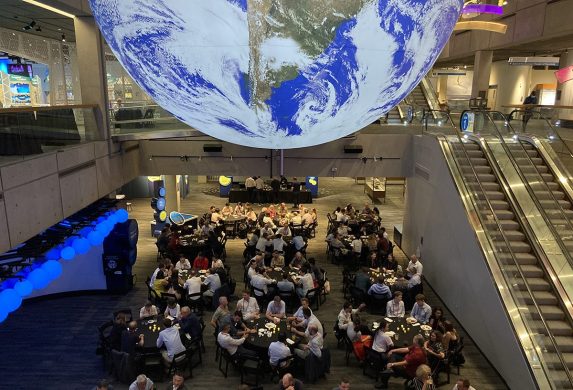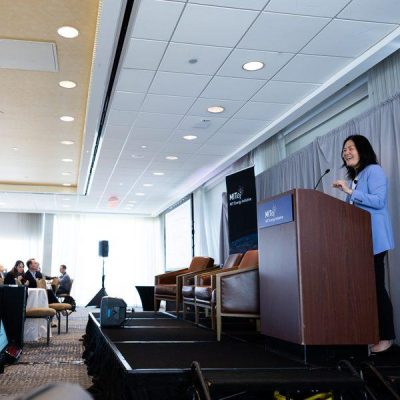Large MIT presence at international conference on solid state ionics

Some 575 researchers participated in July’s 23rd International Conference on Solid State Ionics, a major event featuring over 635 presentations, many from MIT researchers, on the latest basic and applied research involving the movement of ions—charged atoms—through materials. The field has applications in everything from lithium batteries, fuel cells, and computer memory devices, to environmental sensors.
Four MIT professors organized the event that was co-sponsored by the Materials Research Society. The chief organizer was Bilge Yildiz, the Breene M. Kerr (1951) Professor with appointments in both the Department of Nuclear Science and Engineering and the Department of Materials Science and Engineering (DMSE). Her co-organizers were Yet-Ming Chiang, Jennifer L.M. Rupp, and Harry L. Tuller. Chiang is the Kyocera Professor in DMSE; Rupp is a Visiting Associate Professor in DMSE who is also an associate professor at Technical University Munich, while Tuller is the R.P. Simmons Professor of Ceramics and Electronic Materials in DMSE. All are also affiliated with the Materials Research Laboratory.
Charge can be carried through a material in different ways. We are most familiar with the charge that is carried by electrons that help make up atoms. But there are many devices that depend on the motion of charged atoms themselves, rather than just their constituent electrons. Examples include lithium batteries, which depend on the movement of lithium ions during battery charge and discharge. Similarly, fuel cells depend on the movement of hydrogen and oxygen ions in the process of generating electricity.
Participants were excited to resume a fully on-site conference and exchange the latest up-to-date results and findings in the field. “Concerns about global warming, and the renewed focus worldwide on finding alternative means for capturing and storing solar and other forms of renewable energy with, for example, high-energy-density lithium batteries, demonstrated to all that the field of solid state ionics is well poised to provide strategically needed efficient and cost-effective solutions,” says Tuller.
The conference, held in Boston, featured an address by M. Stanley Whittingham of Binghamton University. Whittingham, who won the Nobel Prize in Chemistry in 2019, gave a talk titled “The Key Role of Solid State Ionics in the Development of Li-Ion Batteries.”
The conference also included a competition for young scientists won by George Harrington, of RWTH Aachen University, Germany, for his work and talk on “The Intricacies of Defect Transport in Thin Films.” Until recently Harrington was a visiting scientist in the Tuller research group.
Thomas Defferriere, until recently a DMSE graduate student co-supervised by Rupp and Tuller who plans to remain at MIT as a postdoc, was also among the five finalists. He presented a talk titled “Shining Light on Ionic Transport Across Grain Boundaries” in which he showed how light could boost the performance of fuel cells and other devices by facilitating the movement of ions through these devices. Earlier this year he and colleagues, including Rupp and Tuller, published a paper in Nature Materials about the work.

